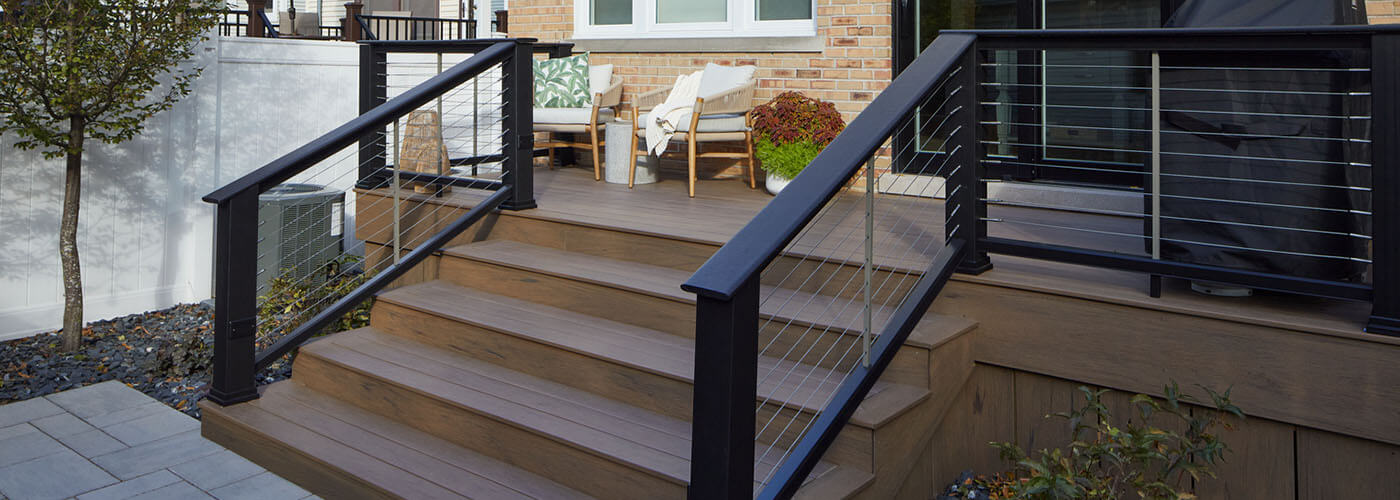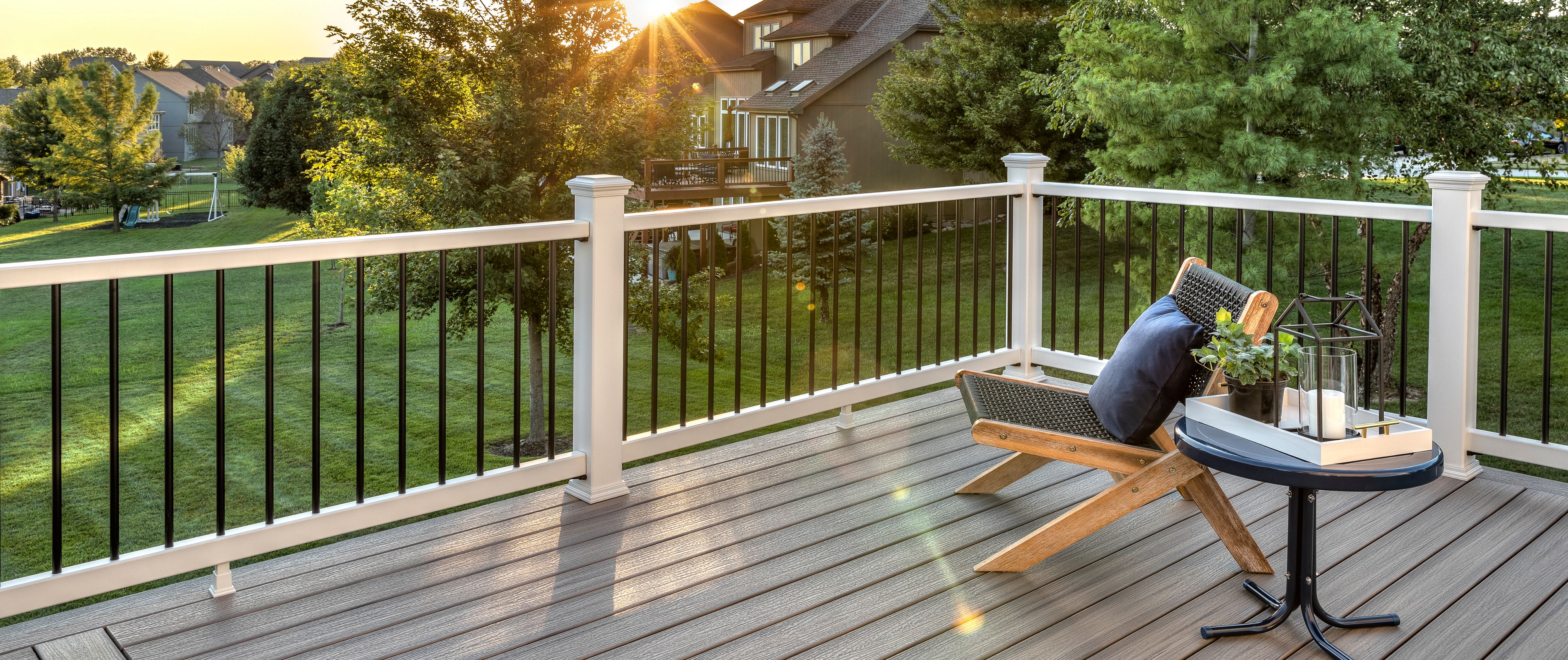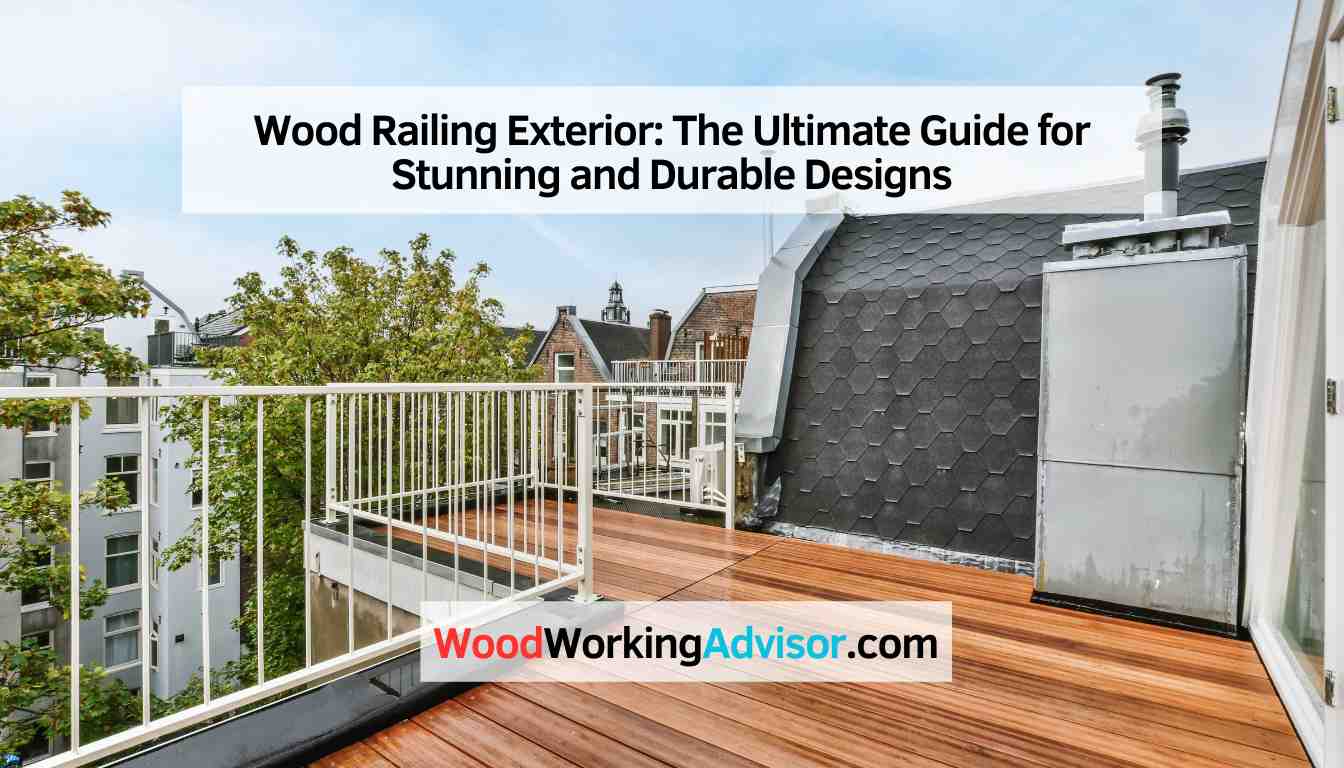Wood railing exterior provides a timeless and classic look to any outdoor space. It offers both aesthetic appeal and functionality, enhancing the safety and beauty of your property.
A well-crafted wood railing exterior can complement various architectural styles and blend seamlessly with natural surroundings, creating a warm and inviting atmosphere. Whether you have a traditional or modern home, wood railing exterior can add character and charm to your outdoor living areas.
With its versatility and durability, wood railing exterior is a popular choice for homeowners seeking a stylish and secure railing solution. Additionally, it can be customized to match your design preferences, offering an elegant and inviting touch to your property.
Types Of Wood For Railings
When it comes to wood railings for exterior spaces, choosing the right type of wood is essential for both aesthetic appeal and durability. The type of wood used can significantly impact the longevity and visual appeal of your railing. There are various options to consider, including hardwood and softwood options.
Hardwood Options
Hardwood is a popular choice for wood railings due to its strength and durability. It is more resistant to rot and decay compared to softwood, making it an ideal option for outdoor use. Some common hardwood options for railings include:
- Oak: Known for its strength and resistance to decay, oak is a popular choice for outdoor railings.
- Mahogany: With its rich, reddish-brown color and natural resistance to rot, mahogany is a luxurious option for wood railing exteriors.
- Teak: Teak is highly prized for its natural oils, which make it resistant to decay, rot, and insects, making it an excellent choice for outdoor railings.
Softwood Options
Softwood is another popular choice for wood railings, offering a more budget-friendly option while still providing durability and aesthetic appeal. Some common softwood options for railings include:
- Cedar: Cedar is naturally resistant to decay and insect damage, making it a popular choice for outdoor railings.
- Pine: Pine is a versatile softwood that can be treated to enhance its durability, making it suitable for outdoor railing applications.
- Redwood: Known for its natural beauty and resistance to decay and insects, redwood is a classic choice for outdoor railings.

Credit: www.timbertech.com
Design Considerations
When it comes to designing a wood railing exterior, there are several key factors to consider in order to achieve a visually appealing and structurally sound result. Design considerations play a crucial role in the overall aesthetics and functionality of a wood railing, ensuring that it complements the exterior of the building while meeting safety standards.
Baluster Styles
Baluster styles are a primary design consideration when planning a wood railing exterior. The choice of baluster style can significantly impact the overall look and feel of the railing. Whether opting for traditional, ornate balusters or modern, sleek designs, it is essential to select a style that harmonizes with the architectural style of the building while also meeting local building codes and regulations. Careful consideration of spacing and placement is crucial to ensure both safety and visual appeal.
Top Rail Designs
Top rail designs are another significant aspect of wood railing exteriors. The top rail not only serves as a handhold for safety but also adds a decorative element to the railing. From simple, straight railings to more elaborate, curved designs, the top rail plays a crucial role in the overall look of the railing. It is important to choose a design that complements the baluster style and fits cohesively with the building’s exterior aesthetic. Additionally, the top rail must be structurally sound and durable to withstand outdoor elements.
Post Options
Post options also contribute to the overall design of a wood railing exterior. The choice of post style and material can significantly impact the appearance and structural integrity of the railing. Whether opting for classic square posts, turned posts, or custom-designed options, it is essential to select posts that align with the overall design vision while providing the necessary support and stability for the railing. The material, size, and placement of posts should be carefully considered to ensure both aesthetic appeal and structural strength.
Installation Process
When it comes to the installation process of wood railing exterior, it’s essential to handle it with care and precision. The installation process of wood railing exterior not only adds a touch of elegance to the exterior of a property but also ensures safety and durability. Let’s dive into the crucial steps involved in the process, from preparation to mounting techniques.
Preparation Steps
- Begin by measuring the area where the wood railing will be installed to ensure accuracy and proper fitting.
- Inspect the surface where the railing will be mounted for any damages or necessary repairs.
- Prepare the necessary tools and materials such as wood railing components, screws, drill, and level.
- Protect the wood railing with appropriate weather-resistant coatings for longevity.
Mounting Techniques
- Start by marking the drilling points on the surface while ensuring proper spacing and alignment.
- Use a drill to create pilot holes for the screws to prevent splitting of the wood.
- Secure the wood railing using appropriate mounting brackets and screws to ensure stability and support.
- Check the alignment and level of the railing continuously during the installation process to maintain precision.
Maintenance Tips
Proper maintenance is essential to ensure the longevity and beauty of your wood railing exterior. By following these maintenance tips, you can keep your railing in excellent condition for years to come.
Protective Coatings
One of the most effective ways to protect your wood railing exterior is by applying a protective coating. These coatings serve as a barrier against harsh weather conditions, UV rays, moisture, and insects. Here are a few popular options:
| Coating Type | Advantages | Disadvantages |
|---|---|---|
| Water-based polyurethane | Eco-friendly, dries quickly | Less durable than oil-based options |
| Oil-based polyurethane | Provides excellent protection, durable | Strong fumes during application |
| Paint | Wide variety of colors, hides imperfections | May require frequent repainting |
Cleaning Methods
To maintain the beauty of your wood railing exterior, regular cleaning is crucial. Here are some effective cleaning methods:
- Mild Soap and Water: Mix a few drops of mild soap with warm water and use a soft cloth or sponge to gently clean the wood. Rinse thoroughly and allow it to dry.
- Wood Cleaner: If your wood railing exterior has stubborn stains or dirt buildup, you can use a specialized wood cleaner. Follow the instructions on the cleaner and rinse well.
- Pressure Washing: If your railing is heavily soiled, you can opt for pressure washing. However, use a low-pressure setting and keep the nozzle at least 12 inches away from the wood to prevent damage.
After cleaning, be sure to reapply the protective coating to maintain the wood’s integrity.
Cost Analysis
Gain insights on cost analysis for wood railing exteriors. Evaluate expenses to optimize budgeting strategies effectively. Get a clear picture of expenses with detailed cost analysis.
Wood railing exterior installation involves material costs and installation expenses that must be considered in a comprehensive cost analysis.
Material Costs
– Wood railing materials can range from $30 to $100 per linear foot.
– Additional materials like screws and finishing products can add $200 to $500 to the total cost.
– High-quality wood options may increase material costs but offer durability and aesthetic appeal.
Installation Expenses
– Professional installation services can cost between $50 to $100 per hour.
– Complex designs or structures may require more labor, increasing installation costs.
– Permit fees may be necessary, adding to the overall expense of wood railing installation.
Safety Regulations
When it comes to wood railing exteriors, safety regulations play a crucial role in ensuring the well-being of individuals. Building codes compliance and height requirements are two key aspects to consider when installing wood railings in an exterior setting. Adhering to these safety regulations not only ensures the protection of people using the railing but also helps in preventing accidents and injuries.
Building Codes Compliance
Building codes serve as a set of guidelines that dictate the minimum safety standards necessary for the construction of wood railings. These codes are enforced by regulatory authorities to ensure that railings meet certain safety requirements. Compliance with building codes helps in maintaining the structural integrity of the railing and prevents it from becoming a potential hazard.
Here are a few important points to keep in mind regarding building codes compliance:
- Materials: The wood used in the railing should meet the specified fire ratings and strength requirements.
- Spacing: The spacing between balusters or spindles should be in accordance with the building codes to prevent the risk of a child slipping through or getting stuck.
- Handrail Height: The height of the handrail should be within the prescribed range to provide adequate support and stability.
- Fasteners: The fasteners used in the construction of the railing should be capable of withstanding the anticipated loads and forces.
By ensuring compliance with building codes, you can create a wood railing exterior that not only enhances the aesthetics of your property but also prioritizes the safety of its users.
Height Requirements
Height requirements play a crucial role in determining the effectiveness of a wood railing in terms of its safety and functionality. The height of the railing is usually measured from the walking surface to the top of the handrail.
Consider the following points related to height requirements:
- Adult Safety: The main purpose of a wood railing is to prevent falls. Adequate height ensures that adults can comfortably use the railing for support and balance while ascending or descending stairs or navigating slopes.
- Child Safety: Height requirements also take into account the safety of children. The railing should be designed in such a way that it prevents children from climbing or slipping through the gaps.
- Local Regulations: Height requirements may vary depending on local building codes and regulations. It is essential to consult the specific requirements of your area to ensure compliance.
By adhering to the height requirements, you can ensure that your wood railing exterior provides the necessary safety measures for both adults and children, reducing the risk of accidents and injury.
Inspiring Wood Railing Ideas
Modern Designs
Contemporary homes benefit from sleek wood railing designs that offer a minimalist touch.
Combining wood with metal accents adds a modern aesthetic to your outdoor space.
Traditional Inspirations
Embrace classic elegance with ornate wood railings that exude timeless charm.
Opt for refined detailing and intricate patterns to create a traditional look.

Credit: www.trex.com
Frequently Asked Questions Of Wood Railing Exterior
What Are The Benefits Of Exterior Wood Railing?
Exterior wood railing enhances the aesthetic appeal of your home while providing safety and security. The natural beauty of wood adds warmth and charm to your outdoor space. It is also durable and can withstand various weather conditions. Additionally, wood railing is customizable and can be easily stained or painted to match your home’s style.
How Do I Maintain And Care For Exterior Wood Railing?
To maintain exterior wood railing, regularly inspect for any signs of damage, such as rot or pests. Clean the railing with mild soap and water, and avoid using harsh chemicals that may damage the wood. Apply a sealant or stain to protect the wood from moisture and UV rays.
Regularly check and tighten any loose screws or hardware.
Can Exterior Wood Railing Be Installed On Any Surface?
Exterior wood railing can be installed on various surfaces, including wood, concrete, and composite decking. However, proper installation is crucial to ensure stability and safety. It is recommended to consult with a professional installer who can assess the specific surface and provide appropriate guidance and expertise.
How Long Does Exterior Wood Railing Typically Last?
The lifespan of exterior wood railing depends on several factors, including the type of wood used and the level of maintenance. Generally, with proper care and maintenance, wood railing can last for several decades. It is important to regularly inspect and address any signs of damage or wear to extend its lifespan.
Conclusion
Elevate your outdoor space with the timeless beauty and durability of wood railing exteriors. Enhanced aesthetics and safety merge seamlessly with the natural appeal of wood. Make a lasting impression with a touch of elegance and functionality. Elevate your home with a stunning wood railing exterior today.


